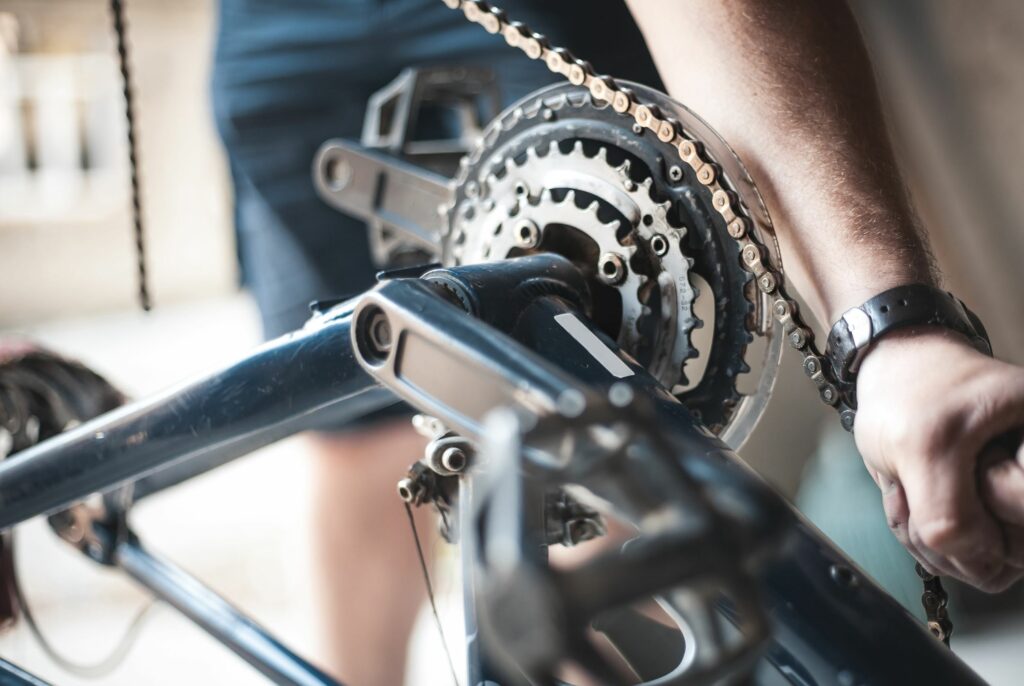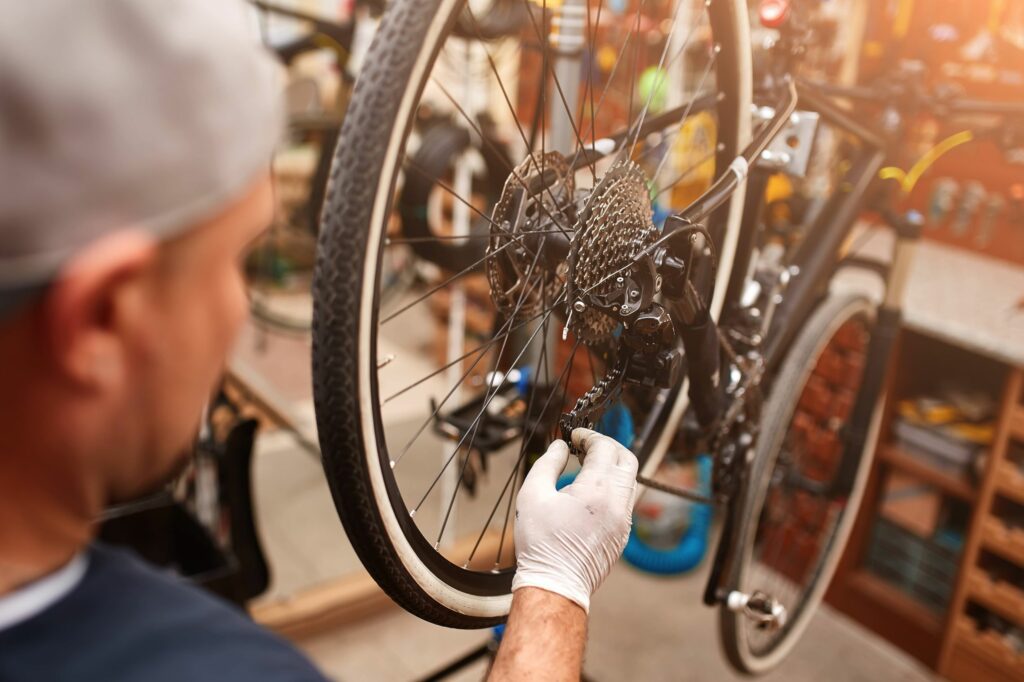A bicycle chain is one of the most important and at the same time the most sensitive components of any unicycle. It plays an extremely important role in the drivetrain and is often subjected to heavy loads – for this reason it wears out relatively quickly. If a situation arises where replacing the chain on your bike is already a necessity, don’t panic. With the right tools and a bike rack at hand, you can handle this task at home. What do you need to keep in mind?
What will you learn from this post?
- What tools and accessories are useful for replacing a chain on a bicycle?
- How to check the wear condition of the chain?
- How to replace the chain in the bike for models with a pin, and how for models with a pin?
- How to put on a new chain?
- What should you keep in mind after installing a new chain?
At a glance
Changing the chain on a bicycle is something that every cyclist has to face sooner or later. While it may seem difficult, it is not so at all – all you need are the right tools and a little knowledge, which you need to turn into practice. A bicycle stand will also come in handy for other service work, not just replacing the chain on the bike.
What will you need when changing the chain on your bike?
It has happened… You are waiting to replace the chain in your bicycle. Do you wonder if you have too rarely controlled what its condition is? Or is the failure not due to the fact that you postponed its cleaning indefinitely? The truth is that it did not have to be due to your carelessness at all. A bicycle chain is such a peculiar part that it wears out or becomes irreparably damaged very quickly – even despite your best efforts not to do so. Yes, regular use of appropriate lubricants and oils significantly extends its life (the same goes for various maintenance treatments), but it is simply not an indestructible component and, like any other, has its limits of durability. When it’s time to replace the chain on your bike after several/many months of heavy use of two wheels, you should be prepared for it.
To remove the chain on your bike, you will need the following tools and accessories:
- A chain reducer (in the case of chains with a pin);
- Chain pliers (in the case of chains with a pin);
- bicycle service stand (which will hold the unicycle stably and prevent it from falling during work).
Is the chain definitely worn out?
Determining the wear condition of a chain “by eye” is not always easy and does not give reliable results. There is also no universal rule of thumb for how often you should change the chain on your bike. Instead of guessing, it’s a good idea to use a simple instrument to check its wear status. This tool is called a gauge. It is a steel plate with individual tabs that should be inserted between the links of the chain. This way you will find out if the chain on your bike is too stretched:
- It is assumed that the maximum extension for steel modes is 1 mm;
- For aluminum cogs, the value is slightly smaller at 0.75 mm;
If one of the tabs of the gauge does not go completely into the chain and you notice that it stands out slightly, this is a sign that it is in good condition and suitable for further driving. However, if the gauge teeth enter the chain in its entirety, you will be facing a chain replacement on your bike.
Replacing the chain in a bicycle – how to remove the chain?
Chain with pin
How to change the chain on the bike for models with a pin? There is nothing difficult about it – as long as you have the aforementioned pliers on hand to undo the clips. All you have to do is use them to lightly squeeze the spot where the chain clasp is located, and then release it. In this case, you don’t have to worry about unchaining and chaining, as long as the chain length is appropriate.
Chain with pin
Removing a chain with a pin, compared to models with a pin, is a slightly more complicated process. However, using a chain reducer, you can easily handle this. Put the crimper to the link and start turning the crank – this will knock the pin out of the socket. Proceed in the same way with the entire chain. Finally, remove the used chain from the bike… and you’re done! Note that the same method is used in case the chain length is not suitable for a particular unicycle.
Replacing a chain on a bicycle – how to put on a new chain
Before putting on the new chain, clean it from the layer of protective grease (which is not suitable for driving) and compare it with the old one for length. If the length is the same, you can proceed to apply it to the various components of the drive train. It is recommended to start with the front derailleur. When applying the chain to the bogie in the rear derailleur, it is advisable to take extra care. Once you’ve put the chain in place, be sure to clip both ends together:
- In models with a pin, you can do it with your hands or use pliers;
- in chains with a pin, you will again need a ferrule with which to connect the two ends of the chain – but be sure to properly rest the link on the ferrule tab, otherwise you may bend the plate and worsen the smoothness of the drive.
Changing the chain on a bicycle – how to do it quickly, efficiently and safely?
It is repeated by both professional service technicians and cyclists who have changed the chains on their bikes at least a few times – a bicycle service stand is an absolute must-have for any work on a unicycle. All chain maintenance, chain removal and installation of a new model involve the risk of moving or tipping the bike. So it is worthwhile to ensure that it is properly protected. With the professional service stand, your two wheels will always stand stably, exactly where you want them. Lightweight construction, high mobility and durability against mechanical damage are other advantages that speak in its favor. A bicycle stand is a practical and convenient solution for any home bicycle workshop – including yours!
What’s in the end?
Now you know how to change the chain on your bike – what else do you need to remember? After the service work is finished, lubricate the new chain, using dedicated oils or lubricants. They protect the chain from adverse weather conditions and extend its life. They also protect against damage to other parts of the drivetrain.
Are you looking for a bicycle rack that will help you secure your unicycle for times when you need to change the chain on your bike? You can find them at rtrbikes.com. Be ready to ride!
Image source: shutterstock.com



